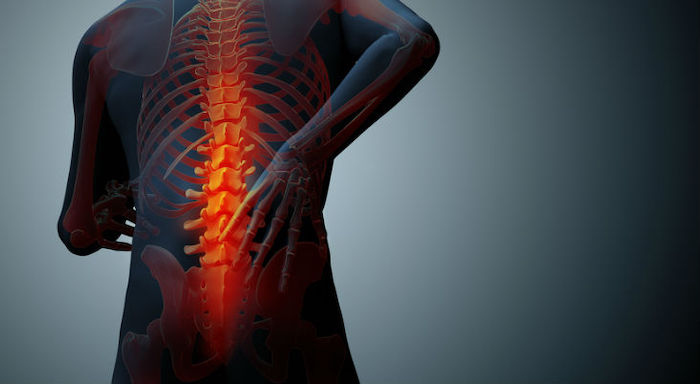
Unsupported postures cause the loads on your spine to disperse incorrectly, weakening the tissues in your lower back. As a result, the intricate network of muscles, discs, and joints in your back tend to be pushed beyond their tolerable limit, causing pain. Likewise, a sudden injury from lifting a heavy object incorrectly can cause immediate back pain and dysfunction.
Here are the most common back postures that lead to pain and actions you can take to correct them.
Common Unsupported Postural Habits
Everyday activities typically involve a combination of actions, such as walking, sitting, standing, bending, lifting, and lying down. Common habits that you may develop while performing these actions include:
- Slouching or sitting slumped on your office chair or couch
- Lying on your belly on the bed while working on a laptop/reading a book
- Sitting on a bed and working on your laptop
- Hunching forward while weeding your garden or washing dishes for a long time
- Using your vacuum cleaner with one hand and long arm movements
- Standing with the weight of your body concentrated on one leg
- Walking in a hunched manner without supporting the head or the trunk
- Lifting heavy objects off the floor by bending your back
If you use one or more of these incorrect postures, it is likely that you will experience back pain. A sedentary lifestyle or lack of physical activity can cause more stress and pain to develop in your lower back region.
If your pain coincides with the start of a new job, use of a new office chair or car, subsides after switching positions, and/or is worse during certain times of the day, it is likely that poor posture may be the cause.
How Poor Posture Causes Back Pain
When you use incorrect posture, several areas of stress may develop within your muscle tissue, spinal joints (lumbar facets), and discs. These stresses may be relieved once the offending posture is corrected or may continue to accumulate, slowly weakening the affected structure, for example:
- Prolonged hunching while standing or sitting can cause your back, core, and abdominal muscles to become strained and painful, reducing their blood supply, and slowly developing stiffness and weakness in the trunk and lower back.
- An unsupported sitting position places a small forward bend on the spine. Over time, this forward bend may place a load on the lower spinal discs, causing herniation.
- An incorrect lifting technique can cause your lumbar disc to herniate, causing it to refer to pain in the lower back and/or radiate pain into your leg through a nearby spinal nerve.
- Working on a laptop or reading while lying on your belly can cause your lower back and hip to extend (bend backward) excessively, altering the dynamics of the lower spinal curve.
It typically takes less effort to maintain a correct posture than an incorrect posture. Changing from a habitual incorrect posture may take time and constant awareness.
Tips to Use Supportive Posture
Here are a few tips on how to maintain good posture while walking, sitting, and lifting.
Walk Tall
While walking, it is important to look straight ahead and to keep your head balanced above your spine. Keep your spine straight and relax your shoulders. Make sure to land on your heel and then gently roll forward to push off the front of your foot. With each step, a gentle spinal rotation must be achieved by reaching the opposite arm forward.
Sit with Support and Get Up Every Hour
While sitting and working on an office chair, keep your back flush against your chair, your head over your spine, your shoulders rolled back, and shoulder blades down. Bend your arms at a 75 to 90-degree angle at the elbows. Your legs must be hip-distance apart with both feet flat on the floor. If you are unable to reach the floor, use a footrest.
Place a small pillow or rolled-up towel to support your lower back and maintain the lumbar curve. Aim to get up every hour and walk a short distance to relieve pressure off your discs.
Lift Carefully
To lift a heavy object from the floor, squat down in front of the object by keeping a straight back and bending your knees. Hold the object close to your chest while you straighten your knees to stand up.
To lift lighter objects, take support from a table or a counter with one hand, bend down at your hip (keeping a straight back), and raise one leg backward for counterbalance. Use the other hand to lift the object. This technique is called the golfer’s lift and is especially useful for repetitive lifting activities.
Your spine thrives in an environment that is healthy, well supported, and ergonomically stable. It is important to continue using correct and supportive posture to prevent the tissues from getting sore again. If your back pain is not relieved or improved after the suggested postural changes, it is advisable to visit a doctor to get an accurate diagnosis of your back problem.
Precision Pain Care and Rehabilitation has two convenient locations in Richmond Hill – Queens and New Hyde Park – Long Island. Call the Richmond Hill office at (718) 215-1888, or (516) 419-4480 for the Long Island office, to arrange an appointment with our Interventional Pain Management Specialist, Dr. Jeffrey Chacko.













